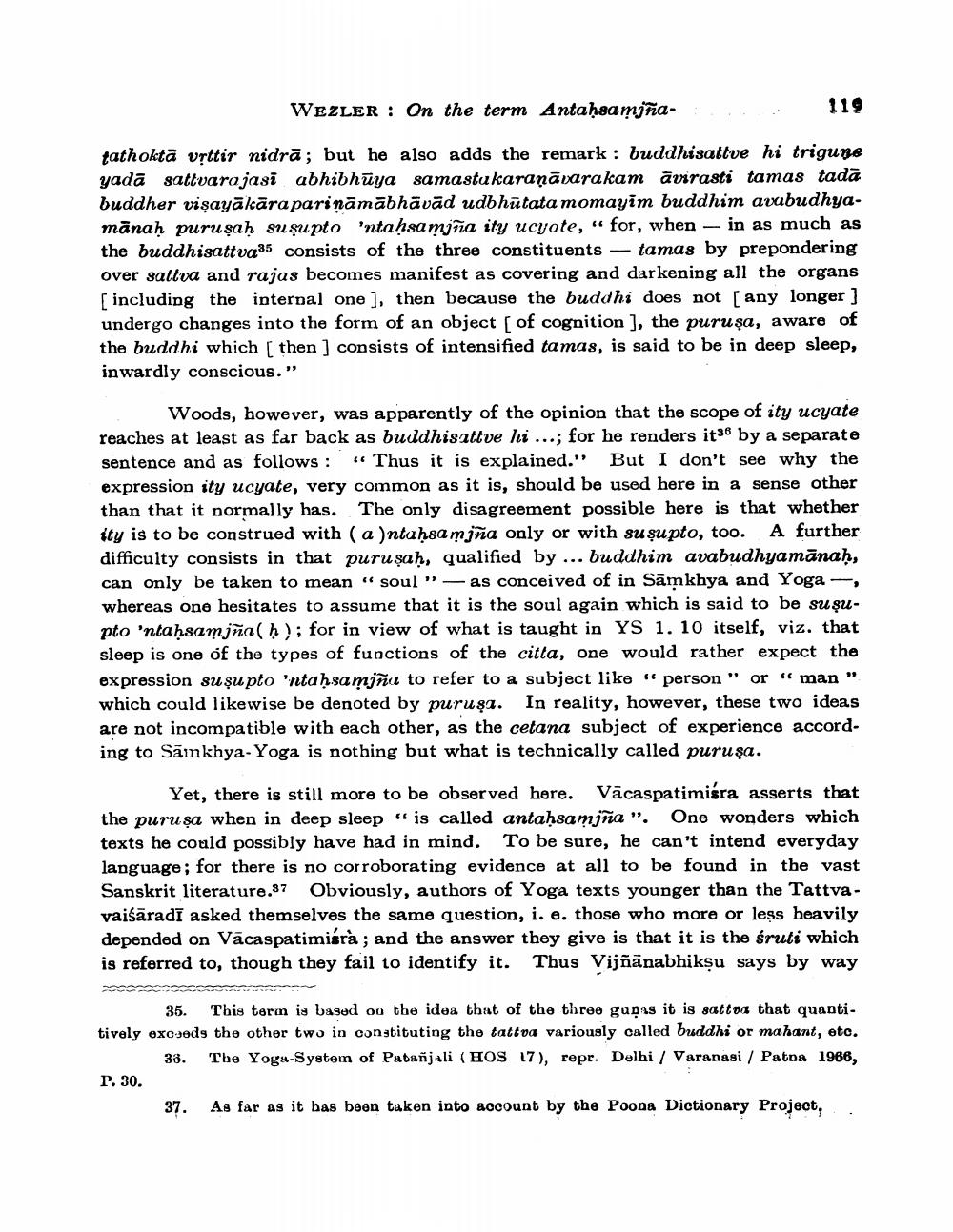Book Title: On Term Antahsamjna Author(s): A Wezler Publisher: A Wezler View full book textPage 9
________________ WEZLER: On the term Antaḥsamjña tathokta vṛttir nidra; but he also adds the remark: buddhisattve hi trigune yada sattvarajasi abhibhūya samastakaraṇāvarakam avirasti tamas tada buddher visayākāra pariṇāmābhāvād udbhatata momayim buddhim avabudhyamānaḥ purusah susupto 'ntaḥsamiña ity ucyote, " for, when in as much as the buddhisattva35 consists of the three constituents - tamas by prepondering over sattva and rajas becomes manifest as covering and darkening all the organs [including the internal one], then because the buddhi does not [any longer] undergo changes into the form of an object [ of cognition ], the purușa, aware of the buddhi which [ then ] consists of intensified tamas, is said to be in deep sleep, inwardly conscious." Woods, however, was apparently of the opinion that the scope of ity ucyate reaches at least as far back as buddhisattve hi...; for he renders its by a separate sentence and as follows: "Thus it is explained." But I don't see why the expression ity ucyate, very common as it is, should be used here in a sense other than that it normally has. The only disagreement possible here is that whether ity is to be construed with (a)ntaḥsamjna only or with susupto, too. A further difficulty consists in that purusaḥ, qualified by... buddhim avabudhyamānaḥ, can only be taken to mean "soul" as conceived of in Samkhya and Yogawhereas one hesitates to assume that it is the soul again which is said to be suşupto 'ntahaamjña(h); for in view of what is taught in YS 1. 10 itself, viz. that sleep is one of the types of functions of the citta, one would rather expect the expression suşupto 'ntaḥsamjna to refer to a subject like "person" or "man" which could likewise be denoted by purusa. In reality, however, these two ideas are not incompatible with each other, as the cetana subject of experience according to Samkhya-Yoga is nothing but what is technically called purusa. 119 Yet, there is still more to be observed here. Vacaspatimiśra asserts that the purusa when in deep sleep is called antaḥsamjña". One wonders which texts he could possibly have had in mind. To be sure, he can't intend everyday language; for there is no corroborating evidence at all to be found in the vast Sanskrit literature.37 Obviously, authors of Yoga texts younger than the Tattvavaiśāradī asked themselves the same question, i. e. those who more or less heavily depended on Vacaspatimiárà; and the answer they give is that it is the śruti which is referred to, though they fail to identify it. Thus Vijñānabhikṣu says by way 35. This term is based on the idea that of the three gupas it is sattva that quantitively exceeds the other two in constituting the tattva variously called buddhi or mahant, etc. 38. The Yoga-System of Patanjali (HOS 17), repr. Delhi / Varanasi / Patna 1966, P. 30. 37. As far as it has been taken into account by the Poona Dictionary Project,Page Navigation
1 ... 7 8 9 10 11 12 13 14 15 16 17 18 19 20 21
